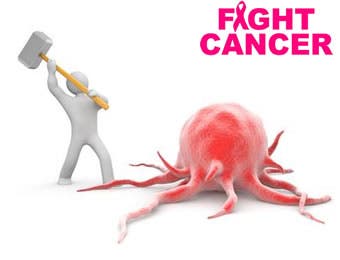Researchers at the University of Edinburgh have successfully tested a “Trojan Horse” drug that can kill cancer and bacterial cells without damaging nearby healthy tissue, offering hope for an end to chemotherapy.
According to Yahoo Australia, quoting the Scotsman, the scientists had created this cancer-killing molecule SeNBD that they successfully fed to cancer cells to kill them without harming surrounding tissue in a peer-reviewed experimental study carried out on zebrafish and human cells.
According to the researchers, cancerous cells are ‘greedy’ and need to consume high amounts of food for energy and they typically ingest more than healthy cells. So, by coupling SeNBD with a chemical food compound it becomes the ‘ideal prey for harmful cells’ which ingest it ‘without being alerted to its toxic nature. The researchers, however, said that more studies are needed to confirm if it is a safe and swift method of treating early-stage cancer and drug-resistant bacteria.
The findings are published in the journal Nature Communications. Scientists hope the treatment will boost survival rates among cancer patients and spare many from damaging chemotherapy. So far, it has only been used on glioblastoma, the most common brain cancer. SeNBD is also a light-activated photosensitiser, meaning it kills cells only after it is turned on by visible light.
This means a surgeon can precisely decide when they want to activate the drug, reducing the chances of it destroying healthy tissues and avoiding side-effects like hair loss caused by other anti-cancer agents, said the university. The study’s lead researcher at University of Edinburgh, Professor Marc Vendrell said: “This research represents an important advance in the design of new therapies that can be simply activated by light irradiation, which is generally
very safe.
“SeNBD is one of the smallest photosensitisers ever made and its use as a ‘Trojan horse’ opens many new opportunities in interventional medicine for killing harmful cells without affecting surrounding healthy tissue.” Dr Sam Benson, a postdoctoral researcher at the university, said the drug’s delivery mechanism will be through the “front door of the cell” rather than having to “find a way to batter through the cell’s defences”.
The legend of the Trojan Horse in Greek mythology recounts the tale of Greek soldiers constructing a giant hollowed-out wooden horse in which they hid to gain access to the city of Troy, having pretended to desert the war.
The Trojans took the massive structure as a gift and ushered it inside the city walls, only for Greek warriors to emerge from inside and sack the city.
Source: Nigerian Tribune

